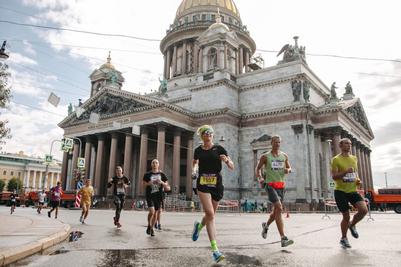And the coach's advice that will help fix the situation.

Alexander Elkonin
ultramarathoner, founder and coach of the ERA running club
A frequent question that is asked by those who are trying to start running: "Why can't I run for a long time?". Let's figure it out.
To begin with, it would be good to understand what "long" means. In the coaching community and among experienced athletes running long distances, jogging for more than 1.5-2 hours is usually considered "long" running training. For novice runners, an hour-long workout can also be considered a "long run". However, most of those who complain that they can't run for a long time are forced to stop or take a step after 10-15 minutes. It can be agreed that a "long run" is such a uniform running load, which lasts as long as necessary (as much as you want, as written in the plan), usually more than an hour.
Why can't you run for a long time
Then it makes sense to understand what exactly is the weak link, which parts of the body and body systems do not withstand prolonged stress.
The pace of running is too fast for you
Most often you hear "not enough breath" — increasing shortness of breath makes you stop. It should be understood that the ability of the respiratory system to pump a large volume of air through the lungs and provide oxygen to the blood is significantly higher than the ability of the heart to pump a sufficient volume of blood and deliver it to the working muscles. As physiologists say, the reserve capabilities of the respiratory system are greater than the reserve capabilities of the circulatory system.
Nevertheless, regardless of which system fails to cope with the load, the practical conclusion is the same. If shortness of breath makes you stop or take a step, it means that the intensity of the load is higher than you can afford right now. Muscle work under prolonged loads is provided by energy, which is obtained by the oxidation of carbohydrates and fats (lipids) with the participation of oxygen — this mechanism of energy supply is called aerobic. In aerobic mode, muscles can work for hours. If the intensity of the load is too high (the pace of running is too fast), the pumping function of the heart does not provide sufficient blood flow to the working muscles, and an oxygen-free (anaerobic) mechanism is connected to provide them with energy. The higher the running speed, the higher the share of anaerobic energy supply in the overall work.
With anaerobic energy supply, lactic acid is formed, it gets from the working muscles into the blood and causes a complex sequence of changes in the work of many systems. In particular, it increases the load on the respiratory system — shortness of breath increases. Thus, if after a short time from the start of a running workout you are forced to slow down due to a feeling of lack of air, slow down.
At the initial stages, running training is an alternation of fast walking and light running. For example, you walk for four minutes and run for a minute, gradually increasing the duration of the running segments. Training of the cardiovascular system (the ability of the heart to pump a sufficient volume of blood, optimal regulation of the vascular lumen to deliver this blood to the muscles) takes a long time, measured in months and years.

Holding your breath while running
Less often it happens that a person cannot run for a long time because he tries to hold his breath and suffocates from this. This is not the best idea, because breathing is a natural process that does not require arbitrary control. An increase in the frequency and depth of respiratory movements with an increase in the load occurs by itself. It does not need to be specially restrained or dispersed.
Heaviness in the muscles
Even less often it happens that the duration of running is limited due to a feeling of muscle fatigue (burning, heaviness, sometimes pain). The ability of specific muscles to work for a long time without losing efficiency (strength endurance) trains faster than the general endurance that we discussed earlier. Adding multi-repetitive strength exercises to the training process and gradually increasing the load gives an effect after a few weeks.
Severe pain that makes you stop
Finally, the most unpleasant option for me as a coach. A long run is impossible or difficult, because after a while there is pain that makes you stop or take a step. If it's not a pain in the hypochondrium (in this case, as we said earlier about general endurance, a decrease in speed and a gradual increase in load help), you have to figure it out individually, there is no general recipe. Sometimes correction of running technique helps, sometimes a change of shoes, sometimes additional exercises, sometimes a doctor's help is required.
Be that as it may, it is important to always remember that running (and any other) workouts should primarily bring joy. No health benefit will happen if you go for a jog like hard labor. Run with pleasure, and everything else — and the ability to run fast, long and beautifully — will come.
Source: championat
Follow us on в Telegram


















